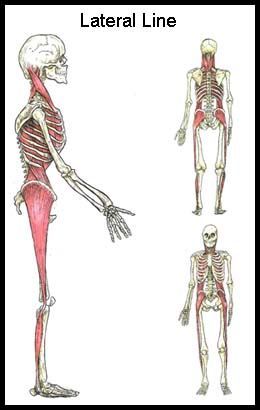Smarter & Better Glute Training
2020-06-24

Jessica Bento, Physical Therapist (Co-Creator of DVRT Restoration, Shoulder & Pelvic Control Courses)
It was really hard to figure out what to title this post. That is because if I wrote the post, “how to train your glute medius and minimus better” I’m not sure how many people would have been pumped to read this and PLEASE don’t leave yet!!!:)
Why is this something I wanted to discuss? Well, outside of some lateral band walks (which we will get into), I don’t think people understand or think about these muscles and more importantly how they are connected to the entire body. If I were to tell you that they are essential to low back, knee, and even shoulder health would you be more interested?
That’s right, these muscles help form the lateral chain of the body that is essential in resisting unwanted forces that put the body and joints in better positions to create movement, produce force, and not gain excessive wear and tear. Yet, telling someone at the gym that you are going to really hit that lateral chain isn’t something that you are going to hear often, if ever!

You can see by the great image the NSCA put out that these muscles (along with others that make up the lateral chain) are important for the strength we develop, our ability to be injury resilient, our mobility, and just building more efficient movement. Once we understand this value, how dow we go about developing better glute training that most people miss.
A great starting point are side planks because they truly hit the entire lateral chain. What is the lateral chain? This is a subsystem that involves gluteus medius, glute minimus, tensor fascia latae, adductor complex, and contralateral (opposite) quadratus lumborum, not muscles you think about getting buff typically at the gym. However, these are muscles that allow us to walk, run, climb stairs, and much more without falling right over, that’s pretty important. You can then see if this chain is not strong then we can have a huge amount of issues especially in the low back and knees.

https://www.instagram.com/p/CAm8IccnM9x/
What you see me do above is use different tools to train the side plank and train the lateral chain as well as improve the glute training most programs miss out upon. The leg threading drill is the most challenging of these glute training drills because its s the most dynamic and complex having our body move through all 3 planes of motion. The kettlebell side plank press is the next more challenging because it requires reflexive strength because we can’t create the tension for stability that the drill requires. That is followed by the band and finally the USB drill.
Most people mis understand the point of the USB so I have this video that better explains the side plank and how the USB helps us with better core and glute training.
https://www.instagram.com/tv/B0io9Shn8gT/
Such drills are a great start and we break dow the side plank in detail in our DVRT Restoration and LIFT courses. Where people sometimes go wrong with the glute medius is when they start raising the top leg that integrates more muscles but also makes the side plank more intense. They often don’t get to full hip extension, they rotate their leg and let glute Maximus be dominant, and create compensatory patterns. Y0u can see how it should look from the post above.
The side plank is just one example of how we can integrate glute training in smarter ways to our training. Half kneeling is another example of how we can use these glute training concepts in more functional positions. As I break down this is also a great way to build upper body strength and stability while teach the body how to work better from the ground up!
https://www.instagram.com/p/B_Kal7zHkQG/
That leads us ultimately to take these glute training ideas to more dynamic exercises. We can see them in lateral band walks but the way we do lateral band walks in DVRT is different because we know we can’t be talking glute training without also integrating the core and lats. What you see coach Robin Paget are ways we accomplish this goal and bring way more to a familiar movement!
https://www.instagram.com/p/B5vDU4GBl3y/
Finally we can get to where we use these glute training and lateral concepts to more functional training based movement patterns. That means we can use them in our hip hinges, squats, presses, pulling, pretty much any drill if we focus on functional training concepts like these rather than just isolating muscles or exercises that don’t show more dimension to what they create. To me, that is the most exciting part of what we do in DVRT and hope it gives you more solutions to make your training more fun and so much more effective.
Check out so much more information in our DVRT Online Courses where you can even set-up payment plans to make it easier to get the information (sorry only for US customers) and save 30% with code “dvrt30” HERE
© 2025 Ultimate Sandbag Training. Site by Jennifer Web Design.






